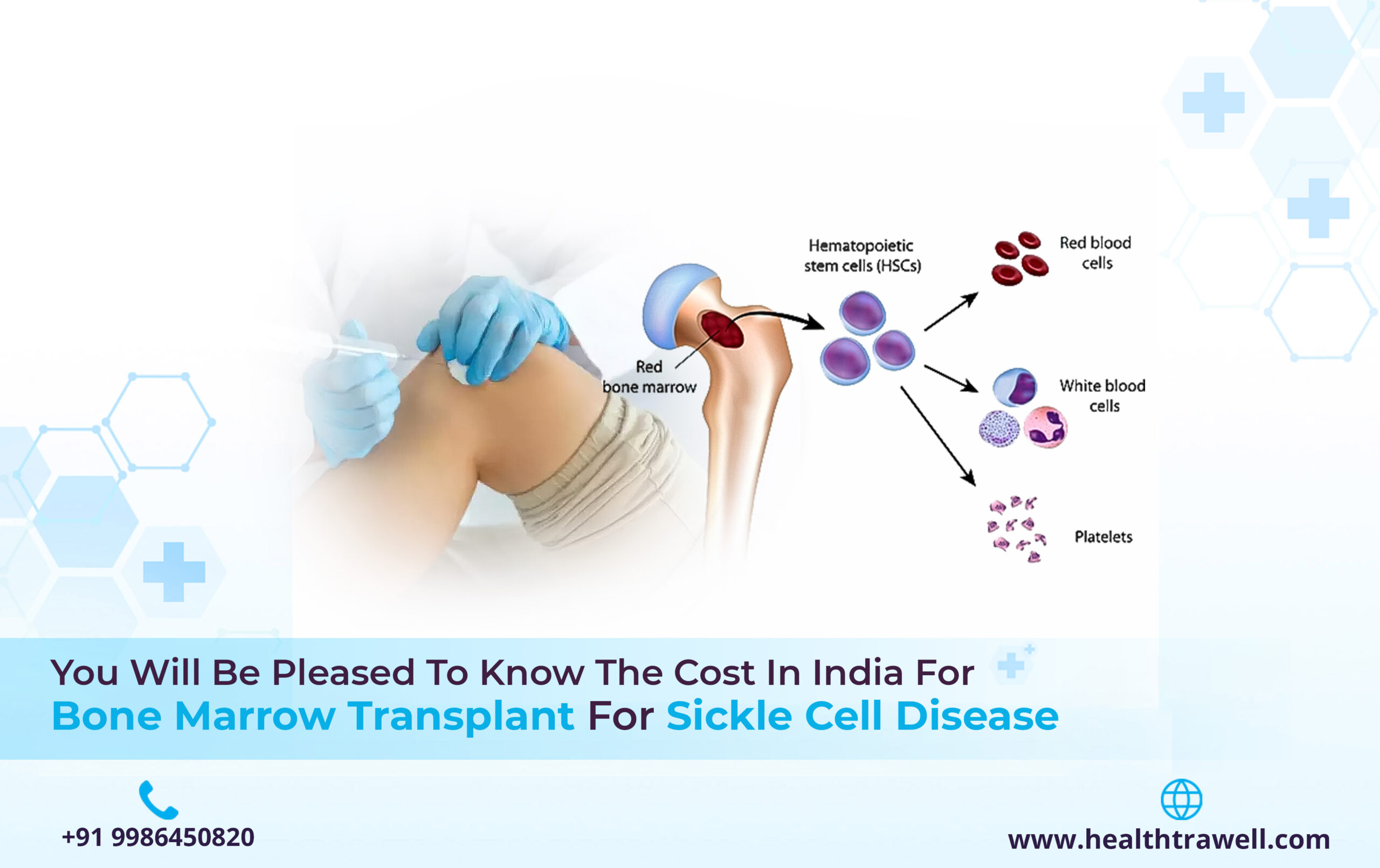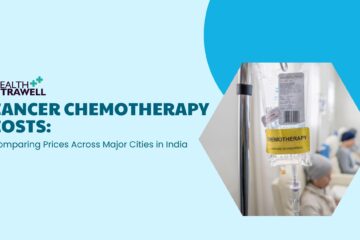Sickle Cell Disease Bone Marrow Transplant Cost in India

How Do Patients Receive Bone Marrow Transplants?
How Do Brothers/Sisters Donate Healthy Bone Marrow Cells?
Risks Associated with a Bone Marrow Transplant
In Case of No Siblings, Can Some Other Family Members Donate Stem Cells?
Bone Marrow Transplant for Sickle Cell: A Lifesaving Treatment Option
This disease happens to be a genetic blood disorder affecting innumerable individuals the world over. It is characterized by abnormal haemoglobin, the protein responsible for carrying oxygen in the red blood cells. As a result, the red blood cells become sickle-shaped and can cause a variety of health complications, including severe pain, anemia, organ damage, and reduced lifespan. While there are treatments available to manage the symptoms of sickle cell disease, one potential curative option is a bone marrow transplant. A bone marrow transplant, also known as a hematopoietic stem cell transplant, involves replacing the diseased bone marrow with healthy bone marrow stem cells from a compatible donor. This procedure can potentially offer a long-term cure for sickle cell disease, as the transplanted cells produce healthy red blood cells. We will also discuss the cost in India for bone marrow transplant for sickle cell disease as matched against other developed nations.
About Bone Marrow
Bone marrow is a spongy tissue found inside the bones, particularly in the hip bones, breastbone, and skull. It happens to consist of the stem cells, which tend to develop into different types of blood cells, to include RBCs i.e., the red-blood-cells, WBCs i.e., the white-blood-cells, as well as platelets. In the case of sickle cell disease, the bone marrow produces abnormal RBCs (red-blood-cells), which tend to cause the characteristic symptoms & complications of the condition.
How Do Patients Receive Bone Marrow Transplants?
For undergoing a bone marrow transplant, a sickle cell patient must first find a suitable donor whose bone marrow is a close match. The best chance of finding a match is typically within the patient’s own family, particularly siblings. A matched sibling donor provides the highest chance of a successful transplant. Once a suitable donor is identified, the patient undergoes a series of preparatory treatments to suppress their immune system and eliminate existing diseased bone marrow cells. This process is known as conditioning. After the conditioning phase, the patient receives the donated bone marrow stem cells intravenously, similar to a blood transfusion. The transplanted cells then migrate to the patient’s bone marrow and begin producing healthy blood cells.
How Do Brothers/Sisters Donate Healthy Bone Marrow Cells?
If a sibling is a suitable match for a bone marrow transplant, they will be asked to donate their healthy bone marrow cells. The process of donating bone marrow has become less invasive in recent years. Instead of extracting marrow directly from the donor’s bones, a procedure called peripheral blood stem cell collection is commonly used. In this process, the donor receives injections of a medication that causes the stem cells to move from the bone marrow into the bloodstream. The blood is then collected through a vein using a process called apheresis. The stem cells are separated from the blood, and the remaining blood components are returned to the donor.
Risks Associated with a Bone Marrow Transplant
While bone marrow transplants offer the potential for a cure, they are not without risks. The procedure carries the risk of complications, including infection(s), graft-versus-host disease (GVHD), and in some cases, even organ damage. GVHD occurs when the transplanted cells recognize the recipient’s body as foreign and attack it. The severity of these risks can vary depending on factors such as the patient’s overall health, the degree of match between the donor and the recipient, and the type of conditioning regimen used.
In Case of No Siblings, Can Some Other Family Members Donate Stem Cells?
If a patient doesn’t have a suitable sibling donor, the search for a compatible bone marrow donor may expand to other family members or unrelated individuals in the general population. The chances of finding a match decrease when moving outside the immediate family, but with advancements in medical technology, the probability of finding a suitable match has improved. In recent years, alternative options have emerged, such as cord blood transplantation. Cord blood, collected from the umbilical cord & placenta after a baby is born, contains stem cells that can be used for transplantation. Cord blood banks store these stem cells, and if a suitable match is found, they can be used for a bone marrow transplant.
Cost in India
The cost of a bone marrow transplant for sickle cell disease can vary significantly depending on the country and healthcare system. Cost in India for bone marrow transplant for sickle cell disease is relatively more affordable as compared to other developed nations like the United States, Canada, or countries in Western Europe. Factors influencing the cost of a bone marrow transplant include the complexity of the procedure, the hospital’s reputation and facilities, the need for additional treatments or medications, and post-transplant care. It is important to consider not only the initial transplant cost but also the long-term follow-up care and potential complications that may arise.
India Calling!
While you are in India, it is essential to consult with healthcare professionals & hospitals to get accurate and up-to-date information on costs, as they can vary depending on the specific case and location within the country. In comparison, the cost of a bone marrow transplant in developed nations can be significantly higher. The expenses associated with healthcare, specialized facilities, and advanced medical technologies contribute to the increased costs in these countries. It is worth noting that the cost of a bone marrow transplant should not be the sole factor in the decision-making process. Factors such as the expertise of the medical team, the quality of care, and the availability of donor options should also be considered when choosing the appropriate healthcare setting. You get it all at a pleasing cost in India!
Health Trawell Can Be Your Treatment Escort in India!
In conclusion, bone marrow transplantation offers a potential cure for sickle cell disease in children. While finding a suitable donor is crucial, advancements in medical technology have expanded the possibilities beyond full sibling donors. The risks associated with bone marrow transplantation should be carefully evaluated, but for many patients, the benefits outweigh the potential complications. When considering the cost of bone marrow transplantation for sickle cell disease, India offers a relatively more affordable option compared to other developed nations as the cost in India for bone marrow transplant for sickle cell disease is much affordable. However, it is important to consider all aspects of the procedure and consult with medical professionals to make an informed decision regarding the treatment of sickle cell disease. You can get the best advice regarding all these considerations from the Health Trawell’s team in India!



